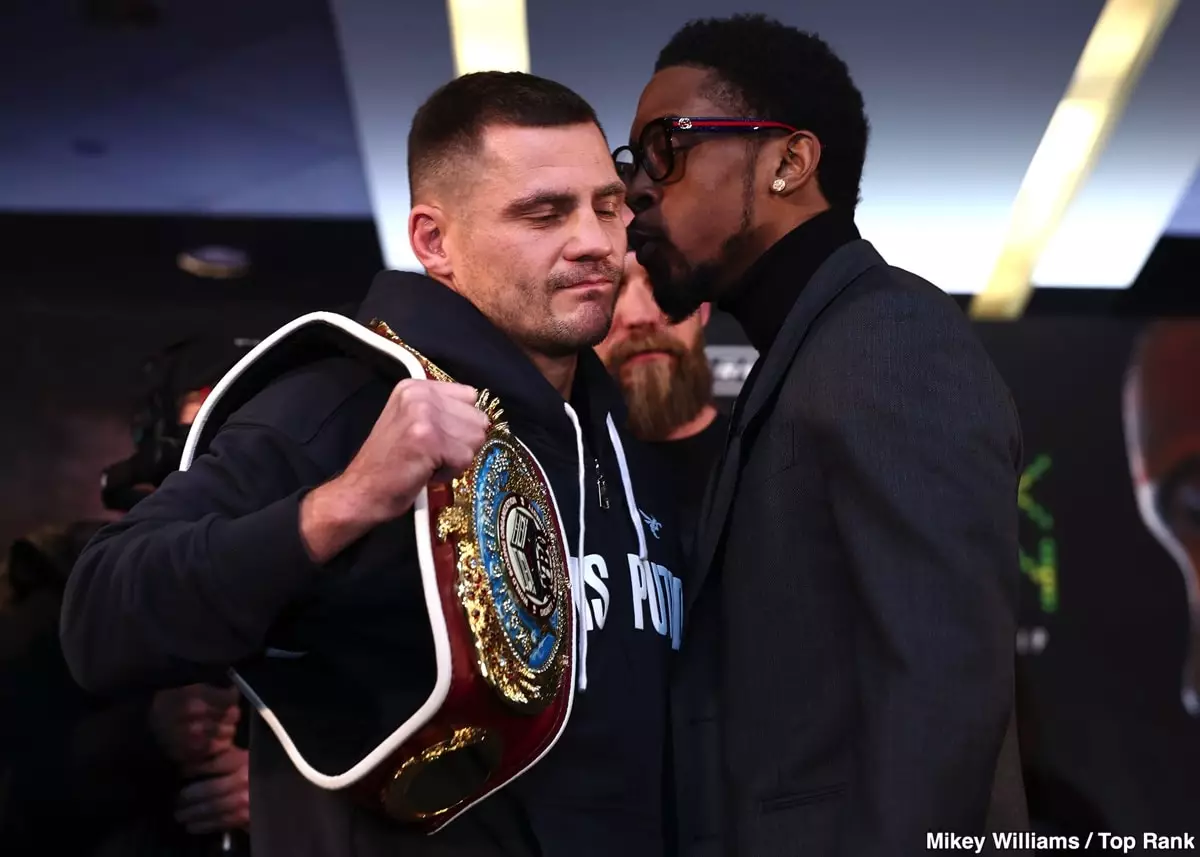By Maestro Amílcar Barnett M., The Bronx, NY, USA
Unexpected incidents can rapidly escalate tensions and media scrutiny, particularly in the days ahead of world title fights. Recently, Top Rank, a leading boxing promotion company, found itself at the center of a storm when a delivery of watermelons and bananas was sent to rising star Keyshawn Davis prior to his press conference with WBO lightweight champion Denys Berinchyk. The situation took on a troubling dimension as Davis accused Berinchyk of orchestrating the racial undertones implicit in the delivery, labeling him a “racist.” Top Rank responded strongly, claiming to be “appalled and disgusted” by the incident, emphasizing that such acts have no place in sports.
This uproar raises significant questions regarding the deeper implications of Davis’s accusations. While it is clear that Top Rank stood firmly by their fighter, their lack of acknowledgment regarding the exchange of claims between the two boxers seemingly creates a gap in the narrative surrounding the incident. The lack of a unified response to the accusations of racism reflects an uncomfortable silence on sensitive topics that arguably deserve more attention.
During the culmination of these events at the press conference, tensions between Davis and Berinchyk reached a boiling point. Davis utilized the platform not just to promote the upcoming match but to vehemently accuse his opponent of racism—a serious charge that draws immediate attention and condenses the tenor of their rivalry into a matter of social consciousness. The implications of publicly branding someone as a racist extend beyond personal animosity; they resonate within the broader discussion of race relations in sports.
However, the one-sided nature of these accusations also poses an ethical question: would the narrative have been the same if the roles were reversed? If Davis had found himself in Berinchyk’s shoes, would a similar accusation, lacking proof, still hold the same weight? This hypothetical scenario illustrates a potential double standard within the sport. It invites critical examination of how accusations can be flung without substantiation, potentially leading to dire repercussions for the accused.
Navigating the tumult outside the ring, Davis’s trainer, Brian ‘BoMac’ McIntyre provided insights into the emerging fighter’s strategy for their upcoming bout. He emphasized the necessity for Davis to excel in this fight against a titleholder like Berinchyk. McIntyre expressed confidence in Davis’s abilities, asserting that his skillset would be instrumental in securing victory.
BoMac further posited that, regardless of the press conference drama, Davis needs to focus primarily on his boxing technique and avoid distractions. He suggested that upon a successful outcome, there are numerous high-profile fights waiting, including speculative match-ups with heavyweight punchers like Gervonta ‘Tank’ Davis. However, despite the optimism, there is an undercurrent of skepticism about whether Davis is genuinely ready to confront opponents of a higher caliber.
The subtle hesitation in McIntyre’s comments regarding potential opponents hints at a more tactical approach that is grounded in a defensive posture against the sporting realities Davis faces as he progresses in his career.
Davis, who has been noted for his remarkable size and presence in the 135-pound division, presents a unique challenge. Many observers have criticized him as a “weight bully”, which poses an interesting conundrum: is it advantageous, or does it limit his growth as a fighter? The concerns about Davis’s potential move to the 147-pound weight class reflect wider anxieties about maintaining performance while facing heavier opponents like welterweight champion Jaron ‘Boots’ Ennis.
Top Rank’s decision to promote Davis heavily indicates their strategic interest in cultivating a star at 135 pounds, steering him towards securing titles rather than jumping into possibly precarious match-ups. A forced elevation in weight could radically alter his career trajectory. The ongoing narrative surrounding Keyshawn Davis illustrates not only the complexities of boxing rivalries but also the pressing issues of race, media portrayals, and the heavy burdens of expectations that young athletes bear in the public eye.
In saying that, as the dust settles post-conflict, it is essential for all involved—from promoters, trainers, to fighters—to engage thoughtfully with the challenges these confrontations present. Navigating the intersection of sport and social issues requires responsibility, integrity, and a commitment to fostering fairness, both inside and outside the ring.


Leave a Reply